Lazare-Nicolas Carnot
Count of the French Empire
Pronunciation:
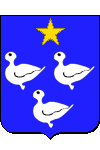
Lazare-Nicolas Carnot was born on May 13, 1753 in the family home in Nolay (in today's Côte d'Or department) to a father of minor nobility, a lawyer at the Burgundy parliament. This background enabled him to enter the Mézières engineering school in 1771, where he had previously studied under Louis-Alexandre Berthier and Gaspard Monge. He graduated two years later with a lieutenant's commission, and joined the Prince de Condé's corps of engineers.
Chevalier de Saint-Louis, author in 1784 of an acclaimed first scientific treatise, he was still only a captain when the Revolution broke out. Immediately in favor of the Revolution, he presented a memorandum to the Constituent Assembly in 1789, recommending the seizure of clergy property.
Elected deputy for Pas-de-Calais at the Legislative Assembly, he became an influential member of the Military Committee. Re-elected to the Convention, he was sent, as soon as the session opened, to organize the defense of the Spanish border, making him the first of the representatives on mission.
He then left for the northern army with a group of commissioners charged with arresting Charles François Dumouriez (April 1793). Carnot's purely fortuitous absence when his colleagues presented themselves to the general had far-reaching consequences. Dumouriez reacted by seizing the commissioners and handing them over to the Austrian enemy, for which they were held captive for thirty months. Had Carnot been present, would there have been another "organizer of victory"?
Soon appointed to the Comité de Salut Public − in July 1793, a fortnight after Maximilien Robespierre and against the latter's advice − he took charge of most military affairs. Not hesitating to surround himself with officers from the ancien régime, who supported him with zeal, he succeeded in setting up a dozen armies in just a few months, bringing together more than a million men. This immense effort quickly bore fruit, and by the end of 1793, the military situation, which had been desperate just a few months earlier, had been restored. The battle of Wattignies (October 16), considered by Napoleon to be the most important of 1792-93, was the high point of this period. On that day, Carnot was not content to simply direct operations, but also to pay with his life.
In the months that followed, Carnot continued his organizational work. Until the 9th of Thermidor. His notoriously bad relationship with Robespierre saved him from too much trouble. But to spare him from arrest, an obscure deputy cried out: Dare you lay hands on the man who organized victory in the armies of the Republic?
Elected a member of the Conseil des Anciens in 1795, he was chosen as Director, but immediately came up against Paul-François de Barras, who challenged his leadership of the war. The setbacks he suffered in the Rhine campaigns of 1795 and 1796, which were conducted according to his plans, damaged his military reputation and credit. As did the first victories won by Napoleon Bonaparte, who only waged war according to his own ideas.
Lazare Carnot moved closer to counter-revolutionary circles and, with his colleague Balthazar François de Barthélémy, began to promote preparations for a monarchical restoration. The coup d'état of 18 fructidor Year V put an end to these plans. Carnot had to flee. He found refuge in Germany, where he violently attacked his former colleagues in pamphlets that the Comte de Provence had reprinted at his own expense and distributed in Paris.
Returning to France after the 18 Brumaire Year VIII, he became a fleeting Minister of War (April 2 - October 8, 1800), his poor relations with Napoleon Bonaparte soon leading to his resignation. He then returned to private life, devoting himself to scientific studies. In 1802, he was appointed to the Tribunat. A miscalculation. There, he proved himself a zealous republican and resolute opponent, voting successively against the Légion d'Honneur, against the consulate for life, and against the Empire.
After the Tribunate was abolished in 1807, Carnot resumed his mathematical activities. Bad investments having ruined him, he turned to Napoleon 1st, who generously granted him the relief he had requested and, for good measure, commissioned him to write a treatise on the defense of strongholds, intended for students at the École de guerre. The work, published a few months later, in 1810, was, according to the Emperor, very poor and remained unused.
In January 1814, with the Allies approaching, Carnot offered his services to Napoleon 1st. They were immediately accepted, on the grounds that Carnot's name alone could rally to the faltering Empire many people uncertain of which side to take, as Carnot himself wrote. The defense of Antwerp was entrusted to him. It was here, on April 4, 1814, that he learned from an English parliamentarian that the allies were in Paris. However, he refused to surrender the city until ordered to do so by an established French government. This was done on April 16.
He submitted to Louis XVIII. But the royal audience he was granted proved so cold − he was a regicide − that his dashed hopes − and Joseph Fouché's tortuous intrigues − prompted him to publish a memoir claiming that the royalist party, and above all the emigration, i.e. the Comte de Provence, were primarily responsible for Louis XVI's death.
On the evening of his return, Napoleon I appointed him Count and Minister of the Interior. A few days later, he made him a peer. However, Carnot's activity during this period was very limited, and his behavior in the final days of the Empire was somewhat inconsistent. He announced the defeat at Waterloo to the Chamber of Peers with astonishing calm, while at the same time advocating mass mobilization and a state of siege to the Council of Ministers. He wept as he bade farewell to Napoleon 1st, but agreed the next day to join the provisional government, perhaps in the hope of becoming its president. But once again, Fouché outsmarted him.
After the capitulation, which he himself had proposed, Carnot was included in the proscription order of July 24, 1815, and had to leave Paris, then France. Initially welcomed in Warsaw, he became persona non grata there due to the excessive expressions of sympathy − to the liking of the Russian authorities − shown to him by the Polish patriots. He then turned to Prussia, which banned him from the Rhine region but allowed him to settle in Magdeburg (Prussia, now Germany).
Lazare Carnot died there on August 2, 1823, and was buried in the Johanneskirche. In 1889, to commemorate the centenary of the French Revolution, his ashes were transferred to the Panthéon in Paris, vault XXIII .
"Lazare Carnot" by Louis-François Lejeune (Strasbourg 1775 - Toulouse 1848).
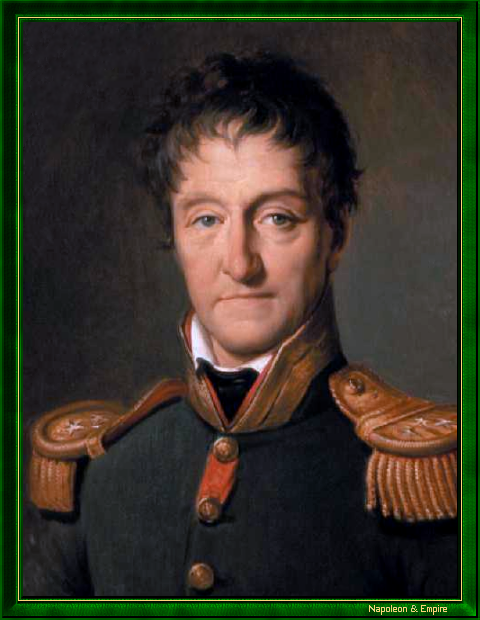
Although Napoleon did not recognize Carnot's military talent, he considered him an honest man and a hard worker. He was also, and perhaps above all if we subscribe to the previous judgment, a first-rate scientist to whom we owe the law of conservation of work in physics, and who can be considered one of the founders of modern geometry. He was also, along with Gaspard Monge, the founder of the École Polytechnique.
When Carnot was entrusted with the defense of Antwerp, the Ministry of War realized that he was still only a battalion commander... In a short space of time, he was promoted to lieutenant-colonel, colonel and brigadier-general, and finally to major-general. He was sixty-one years old, finally joining the likes of Lazare Hoche, François Marceau, Jourdan and Napoleon Bonaparte, whom he had distinguished and promoted twenty years earlier.
Philately: In 1950, Les Postes de la République Française issued a 10.00 F stamp bearing the effigy of Lazare Carnot.
In front of his birthplace in Nolay, a bronze statue of Lazare Carnot honors his memory.
His name is inscribed on the 4th column (north pillar) of the Arc de Triomphe de l'Étoile .
Acknowledgements
Our warmest thanks to Ms Marie-Christine PENIN, (webmistress of Tombes & Sepultures website) for the photograph of Lazare Carnot's tomb in the Pantheon.Other portraits
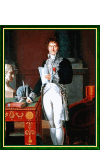
"Lazare Carnot". XIXth century French school.
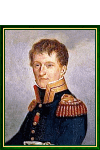
"Lazare Carnot", by Charlemagne Oscar Guet (Meaux 1801 - Paris 1871).
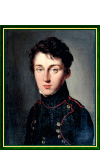
"Lazare-Nicolas-Marguerite Carnot" by Louis-Léopold Boilly (La Bassée 1761 - Paris 1845).